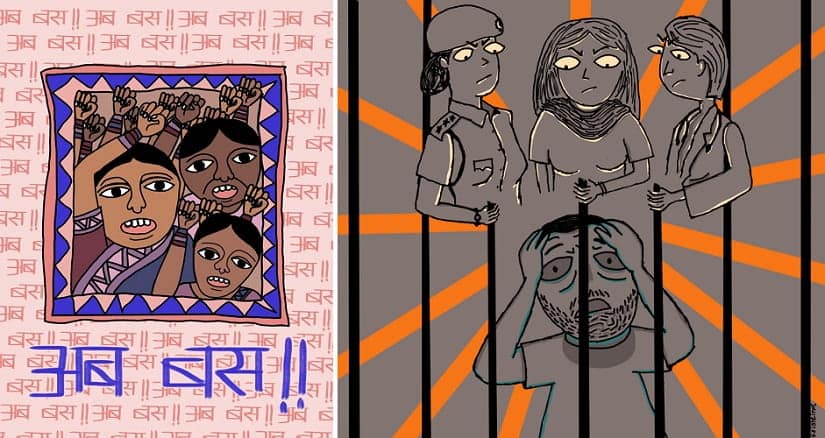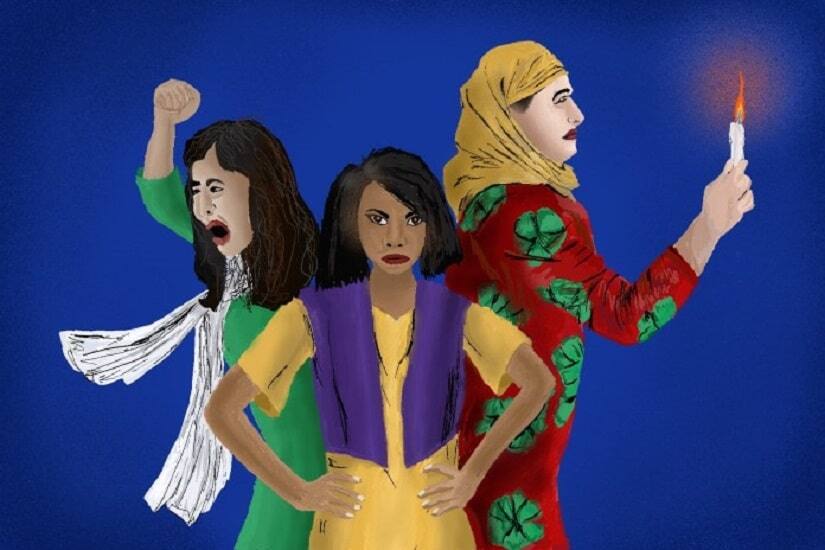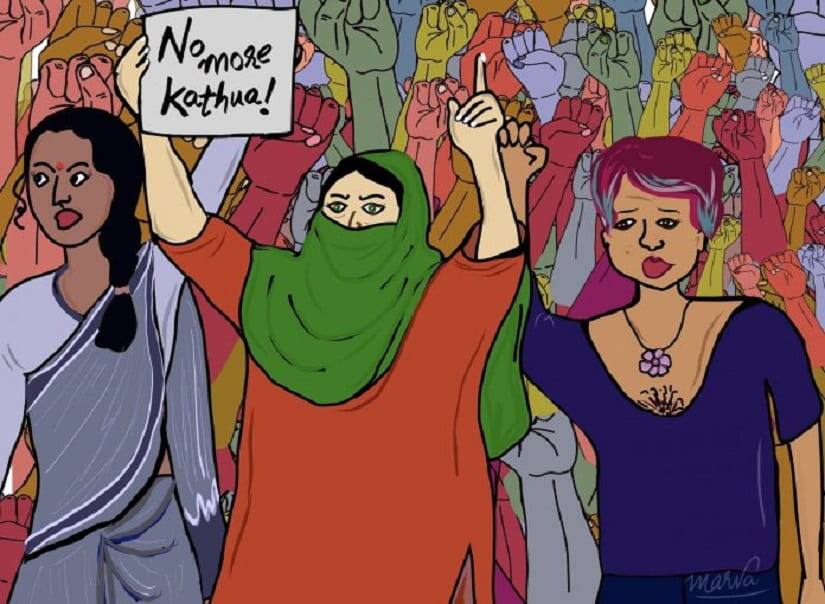“Shame should be the domain of rapists, not their victims,” says Japleen Pasricha, founder of Feminism in India (FII), an intersectional feminist platform for writers. FII recently created a database of 10 images that can be used by the media when reporting on violence against women, in lieu of stereotypical representations that depict them cowering in fear or shame, or in an attitude of torment and hopelessness. This imagery, Pasricha notes, is problematic “as it reinforces the shame and victimisation of women”. The database emerges after FII ran a year-long campaign — #GBVinMedia (gender-based violence in media) — analysing how rape and sexual violence were reported in the mainstream media. FII campaign manager Asmita Ghosh says they found “sensationalist headlines and images, victim-blaming language, and trivialisation of the crime through the use of words like ‘sex scandal’”. But FII wanted to go beyond commenting on these lapses, to helping change the prevalent narrative. The platform launched a toolkit in 2019, a 30-page manual with ethical guidelines for the media on writing about rap and other gender-based violence. They also held seminars and workshops, reaching out to media professionals and students with their findings and recommendations. In researching and preparing the toolkit, Ghosh realised that one of the major issues with the mainstream media’s manner of reporting on rape was the type of imagery used. “It wasn’t just about the images, but it was a big part of the whole problem,” she says. [caption id=“attachment_8128731” align=“alignnone” width=“825”]  (L) Ab Bas, by Sunidhi Kothari/Feminism In India (R) Perpetrator in Jail, by Srishti Sharma/Feminism in India[/caption] Since FII’s campaign was geared towards not only identifying problem areas in the conventional coverage of gender-based violence, but also offering suggestions to rectify the same, Ghosh and Pasricha felt imagery was something that could be tangibly changed. “Using better language and headlines would be a long-drawn process. But changing images — that is easily doable,” Ghosh says. FII then issued an open call to artists and received many submissions. Among the artists to contribute their work was Srishti Sharma, a Delhi-based freelance cartoonist and illustrator. Spurred by the lack of appropriate imagery, Sharma says she created artwork that “is mostly how I feel the scenario should be after rape”. This meant shunning the conventional, triggering tropes of a fearful girl or woman surrounded by bloodied hands reaching for her out of the darkness, and the use of colours like black and red. “We need to understand how visuals impact the way we think,” says Sharma. For Aasawari Suhas Kulkarni, a graphic designer and writer from Aurangabad, inclusivity and representation were the guiding forces behind her submissions. “Non-binary people are still very much considered the ‘other’ in India,” she says. “Also, women are rarely shown in a position of command, standing up against injustice, coming together for a cause. I wanted to portray those left out of the narrative, as a part of something bigger.” In one of Kulkarni’s artworks, women protest, holding placards saying “Stop”. Another depicts solidarity among women. Both works defy conventional gender norms and stereotypical portrayals, reflecting Kulkarni’s thought that “if sexist narratives are to be changed, we need to apply feminist principles to design and art”. [caption id=“attachment_8128771” align=“alignnone” width=“825”]  Solidarity Against Violence, by Aasawari Kulkarni/Feminism In India[/caption] [caption id=“attachment_8128791” align=“alignnone” width=“825”]  No More Kathua, by Marva M/Feminism In India[/caption] For Kerala-based artist Marva Kulsumbi, her work drew on her memories of reading the newspaper as a child, and being disturbed by the images used in reports of violence against women. “Every time I read something on gender violence, there was always this sad or scared girl…the victim,” Kulsumbi observes. Her first illustration for FII is a reminder of the Kathua rape case. The second depicts workplace sexual harassment. “Victims are often scared to come out because their entire career is at stake. And rape alone is not sexual harassment; it could also be somebody trying to stroke your hands at work. That’s what I wanted to point out,” she says. A completely under-represented section of the populace in coverage or depictions of gender-based violence are tribal women. Fine Arts student Sunidhi Kothari wanted to address this oversight through her submissions. “It’s important to talk about them because they have been ignored and they’re still being ignored. I’d like the world to care more about them. They’re facing issues that we’ve never heard of,” Kothari told this correspondent. All the images have been made available by FII for media organisations to download and use under the Creative Commons License 4.0, with attribution to the platform and the individual artists. “The images we have created show women as strong and resilient beings,” FII’s Asmita Ghosh concludes, “fighting against gender-based violence through protests and by speaking out.”
Artists who responded to FII’s open call for submissions have created imagery that encompasses a number of themes, including representation, empowerment, and solidarity. The emphasis is on images that show women as strong and resilient beings as opposed to stock photos that portray them as hapless victims.
Advertisement
End of Article


)
)
)
)
)
)
)
)
)



